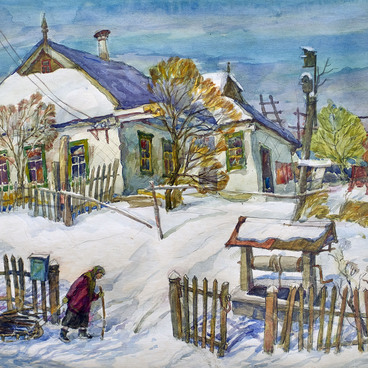The portrait of a Turkmanian girl called Edzhebay from the Valuy Museum of History and Art collection was painted by the People’s Artist of Turkmenistan and laureate of the Makhtumkuli prize, Yevgenia Adamova.
The future artist was born in 1913 in one of the most intelligent families in Ukraine. But soon, they moved to Turkmenistan, which became their second homeland. Her parents wanted her to work as a doctor.
In 1940, Yevgenia Adamova and other students, including those from the world-famous Shock school of Oriental Arts, went for a month and a half as part of the famous expedition scientist-ethnographer Valentin Moshkova. She drew yurts, carpet ornaments, and decorations. Hard work and creative search helped the artist to create memorable paintings on historical themes. One of her early paintings, ‘I will still study, ” refers to the period when Eastern women first began to assert their rights to education. And today, in backward regions, girls’ purpose is seen only in getting married on time. But in the 1930s, women sought their rights, sometimes risking their lives.
Obeying their will, Adamova entered the medical Institute, but she moved to an Art school in the third year. There she studied with famous teachers and painters, including the first Turkmen artist Byashim Nurali, Julia Daneshvar, Ivan Cherinko, Sergey Beglyarov, and many others. All of them played a significant role in developing the national culture of Turkmenistan because they brought up a whole generation of talented painters. Young artists were sent to Moscow, where they studied Russian and Western European paintings’ best paintings. They also organized expeditions to Turkmenistan, where young people got acquainted with ethnography, folk art, Turkmanian everyday life, and carpet products.
In 1940, Yevgenia Adamova and other students, including those from the world-famous Shock school of Oriental Arts, went for a month and a half as part of the famous expedition scientist-ethnographer Valentin Moshkova. She drew yurts, carpet ornaments, and decorations. Hard work and creative search helped the artist to create memorable paintings on historical themes. One of her early paintings, ‘I will still study, ” refers to the period when Eastern women first began to assert their rights to education. And today, in backward regions, girls’ purpose is seen only in getting married on time. But in the 1930s, women sought their rights, sometimes risking their lives.



